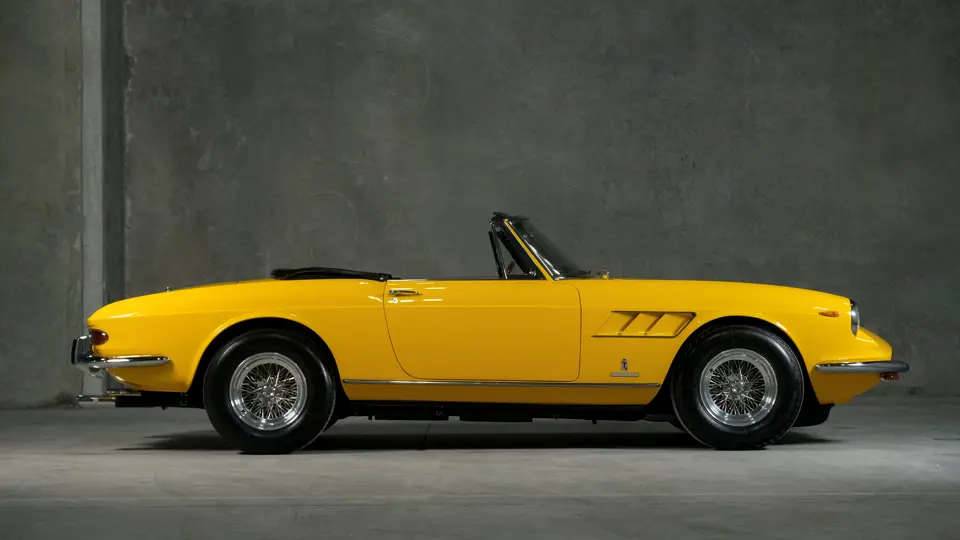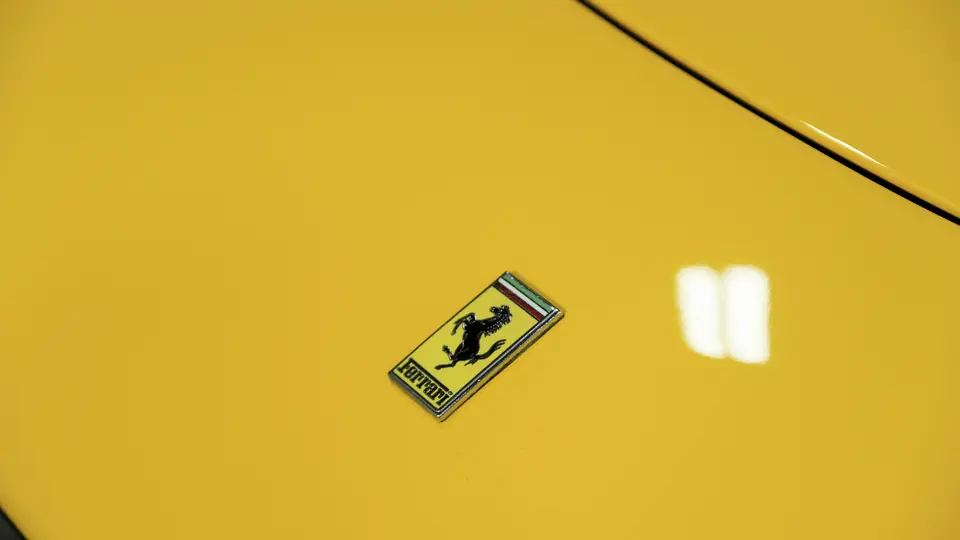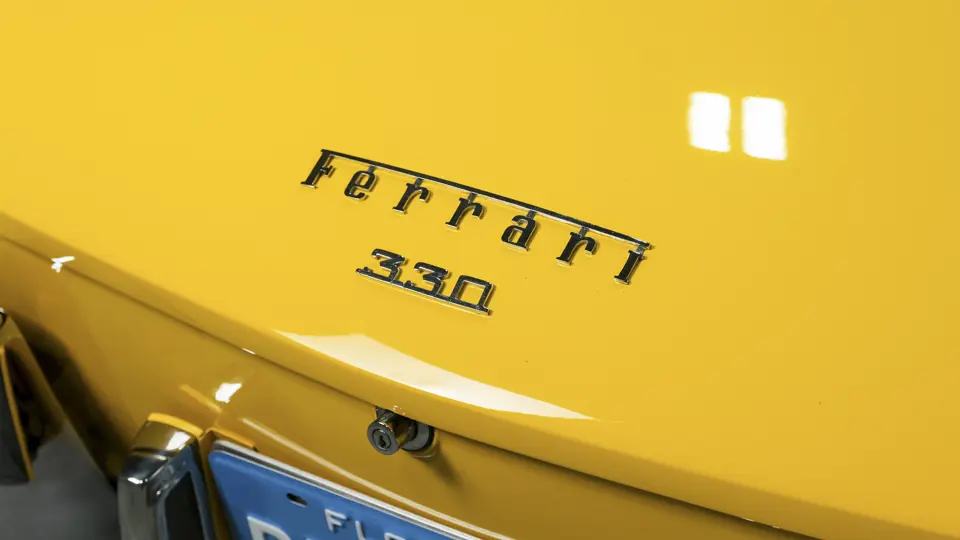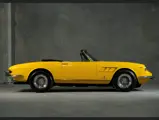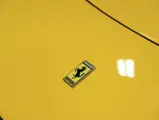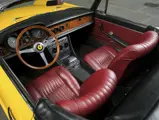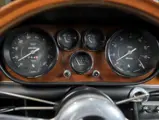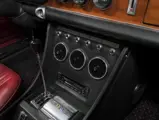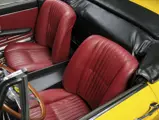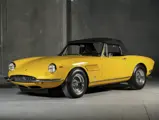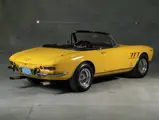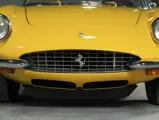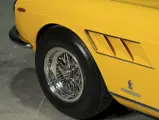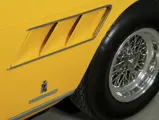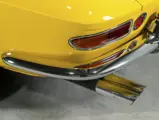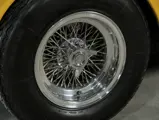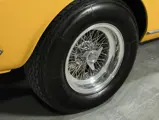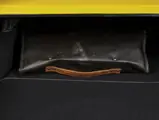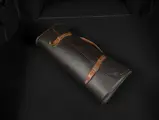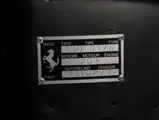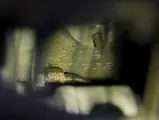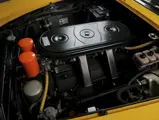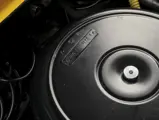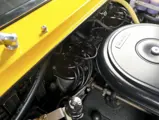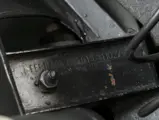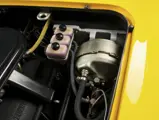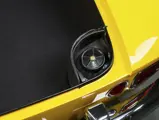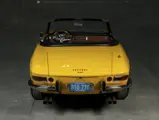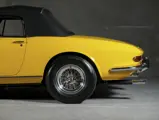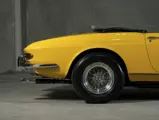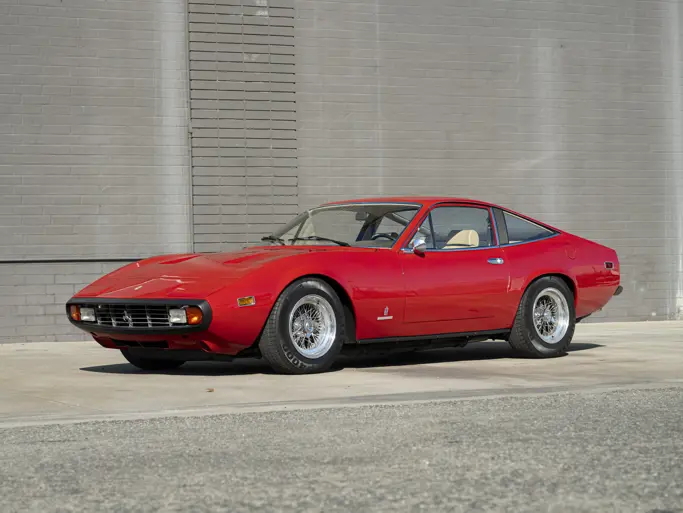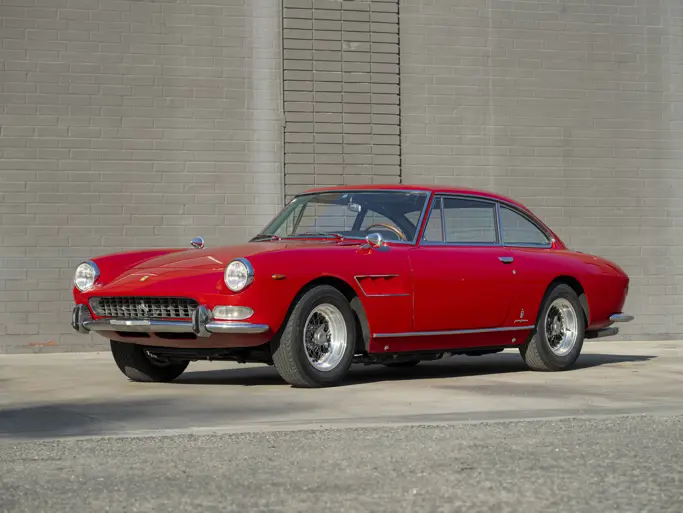
1968 Ferrari 330 GTS by Pininfarina
{{lr.item.text}}
$1,930,000 USD | Sold
{{bidding.lot.reserveStatusFormatted}}
- The 86th of 99 examples produced
- Retains numbers-matching 4.0-liter Colombo V-12 engine
- Delivered new via Luigi Chinetti Motors; equipped with Borrani wire wheels and air conditioning
- Restored by Steve Tillack & Co. in its present Giallo Fly over red and black interior.
- Presented in exceptional condition after 14 years of fastidious long-term ownership
“Out on the road, once the driver has the feel of things, he feels he could do almost anything with this car.” - Road & Track magazine, 1968
Ferrari launched the 330 GTS as the successor to its 275 GTS at the Paris Auto Salon in 1966. The spider version of the 330 received mechanical updates that enabled it to offer the added refinement boasted by its popular coupe counterpart, the 330 GTC. Perhaps the most significant upgrade was the enlargement of the engine displacement from 3.3 to 4.0 liters.
The Colombo-designed V-12 powerplant was designated as Tipo 209/66 and featured a bore and stroke of 77 millimeters and 71 millimeters respectively, which combined to give an exact displacement of 3,967 cubic centimeters. Breathing through three triple-choke Weber DCZ/6 carburettors, it was capable of a conservative 300 brake horsepower at 7,000 rpm and 244 pound-feet of torque at 5,000 rpm. The increased power enabled a 0-60 mph sprint of around 6 seconds and a top speed approaching 150 mph.
From the newly introduced torque tube drive train, power was routed to the rear wheels via a five-speed transaxle gearbox and a ZF limited-slip differential. Class-leading roadholding and traction was ensured by the fully independently suspended Tipo 592 chassis, which featured the same wheelbase (2,400 millimeters) and track as the concurrently offered 275 GTB/4. The suspension setup itself comprised unequal-length wishbones, coil springs, and telescopic shock absorbers, plus anti-roll bars at either end. Keeping things in check were vented disc brakes on all four wheels, sitting behind either Campagnolo magnesium alloy or Borrani wire wheels.
For the 330 GTC and GTS bodywork, Pininfarina drew inspiration for the front end from the 500 Superfast with its split bumper and triple-louvred engine vents on each front wing, while the rear was kept almost identical to that which had proved so popular with the 275 GTS. The bodies themselves were an all-steel affair, other than the doors, hood, and trunk, which were formed from aluminum; the production process saw bare chassis transported directly from Maranello to Pininfarina’s plant at Grugliasco outside Turin, where they were fitted with bodywork and interiors before being sent back to Ferrari for final mechanical installation. An elegant swage line along each flank elegantly tied the new front end to the rear and the overall design is widely regarded as being one of the most elegant cars of the 1960s.
CHASSIS NUMBER 11027
Ninety-nine examples of the 330 GTS were produced before production was shifted to the 365 GTS in 1969. This example is chassis number 11027, the 86th example rolling off the final assembly line in February 1968. It was delivered to its first owner shortly thereafter via Luigi Chinetti of Greenwich, Connecticut, specified in Argento paintwork with Nero trim, with options of Borrani wire wheels and air conditioning.
According to records furnished by Ferrari historian Marcel Massini, 11027 covered a little over 25,000 miles during the first decade of its life before being resold by Ed Waterman’s Thoroughbred Motorcars of Arlington, Virginia in 1976. The new owner chose to bestow it with a new paintjob of Rosso before passing the car on in the early 1980s. In 1984, the car was treated to a comprehensive three-year restoration, during which the mechanicals, cosmetics, interior, and exterior were fully restored. It subsequently earned it Best in Show awards at the 1985 and 1986 Ferrari Newport Concours, as well as the 1987 SCCA Concours in Albany, New York.
Acquired by collector and vintage racer Edi Arrowsmith of Flagstaff, Arizona in February 1994, it was later comprehensively restored by the exceptionally highly regarded marque specialist Steve Tillack & Co. in Redondo Beach, California, as noted by the report on file from Ferrari historian Marcel Massini. At this time, it was repainted in Giallo Fly and re-trimmed with a dark red leather interior with period-correct black vinyl accents, as it appears today.
More recently, the car was displayed at the Palm Beach International Concours d’Elegance in 2005, appeared at the 2013 Cavallino Classic, and was featured in the 2014 official Ferrari Calendar by Gunther Raupp. Its current owner has enjoyed the car as part of his collection for the past 14 years. Its condition is testament to its fanatical upkeep, courtesy of Dyke Ridgley, Greg Jones, and Dave North, who have been entrusted with fettling the collection whenever required. A recent test drive report stated that the car drove impeccably and that it showed no signs of mechanical degradation. Its exceptional mechanical condition is mirrored by its cosmetic appearance, which is also exceptional. It is accompanied by its correct jack roll and owner’s manual.
With excellent ride comfort and formidable power and handling ability, Ferrari could justifiably claim the 330 GTS to be the world's finest convertible two-seater in its day. This magnificent example is likely to be one of the finest in existence—a superb addition the most serious collections.


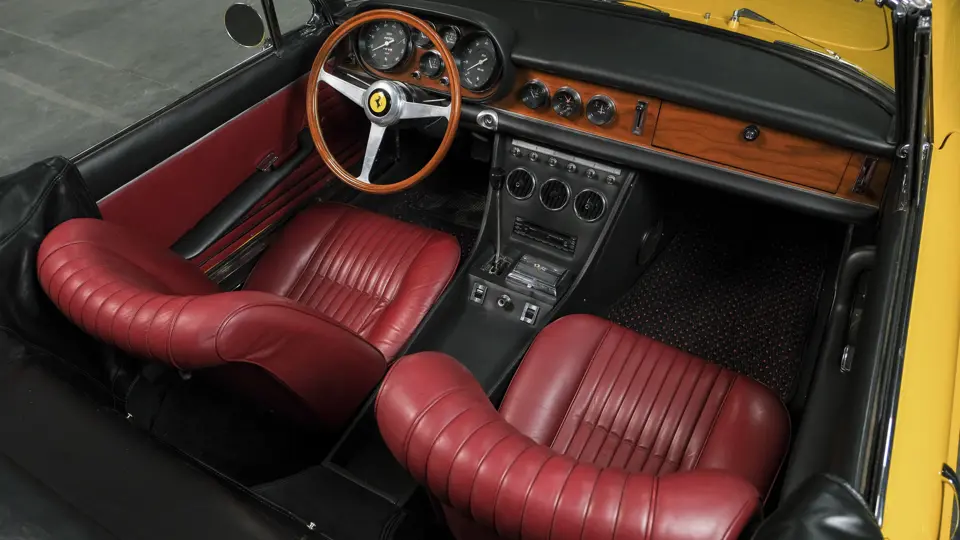


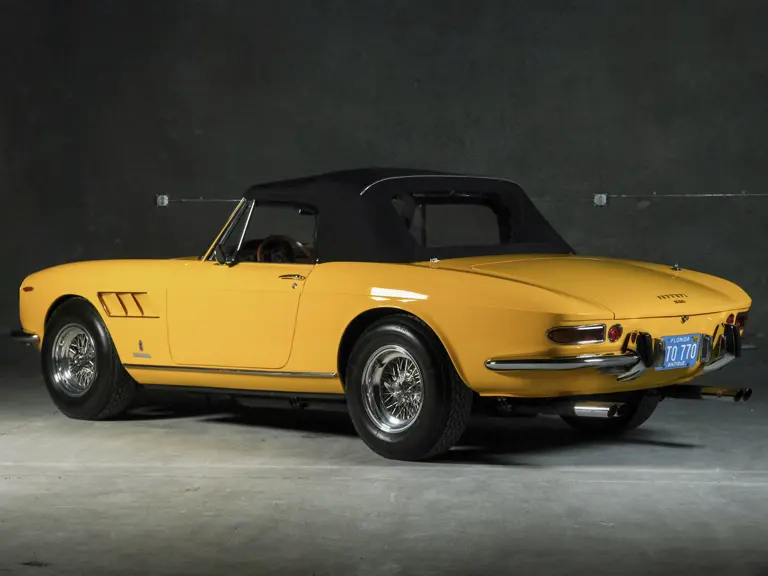
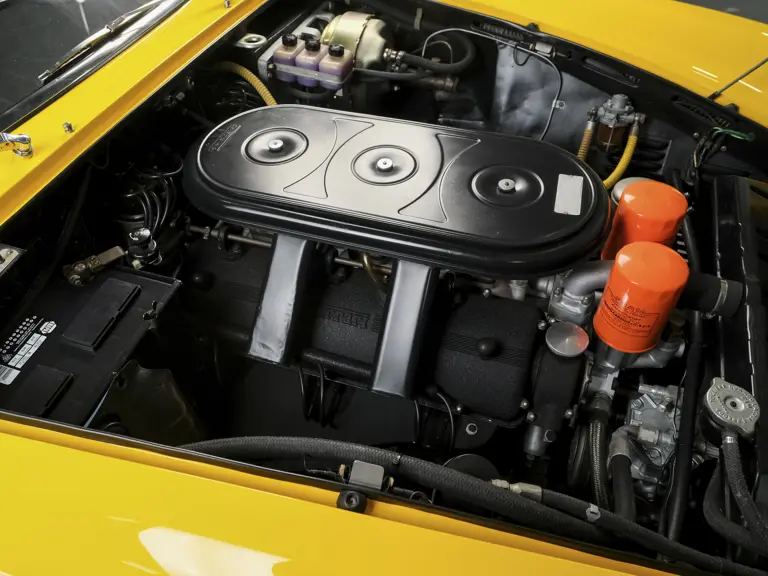
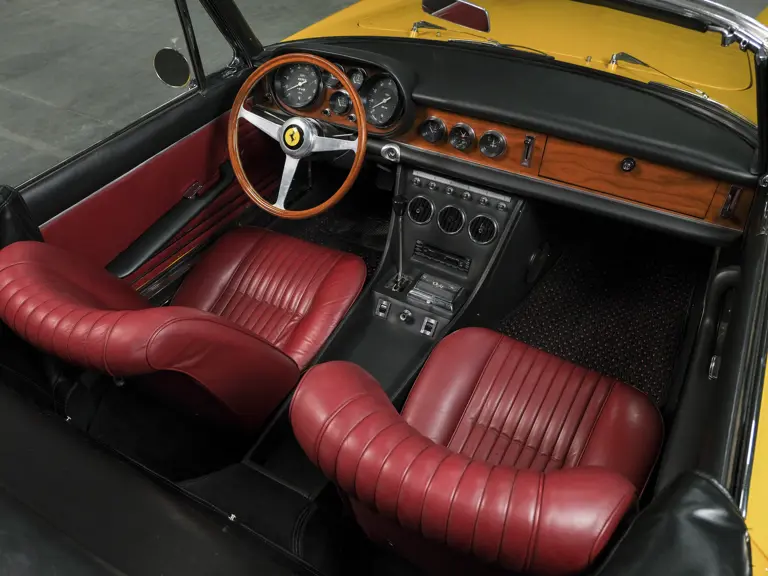
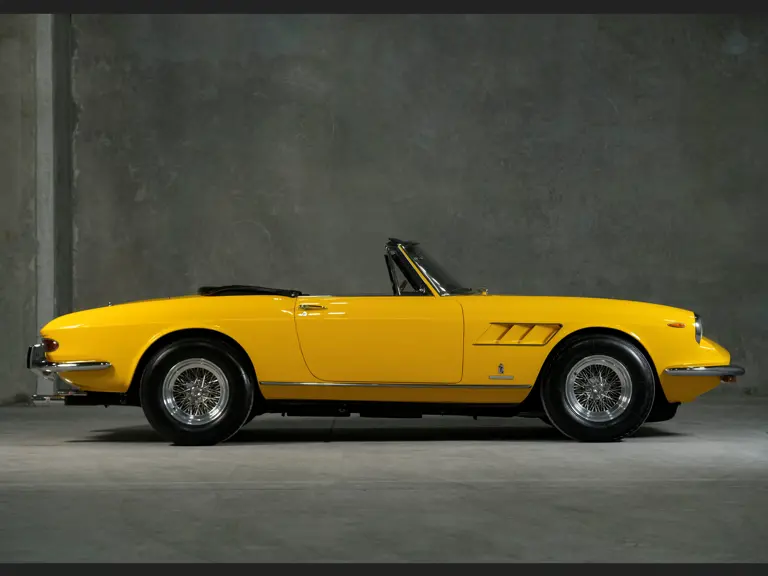
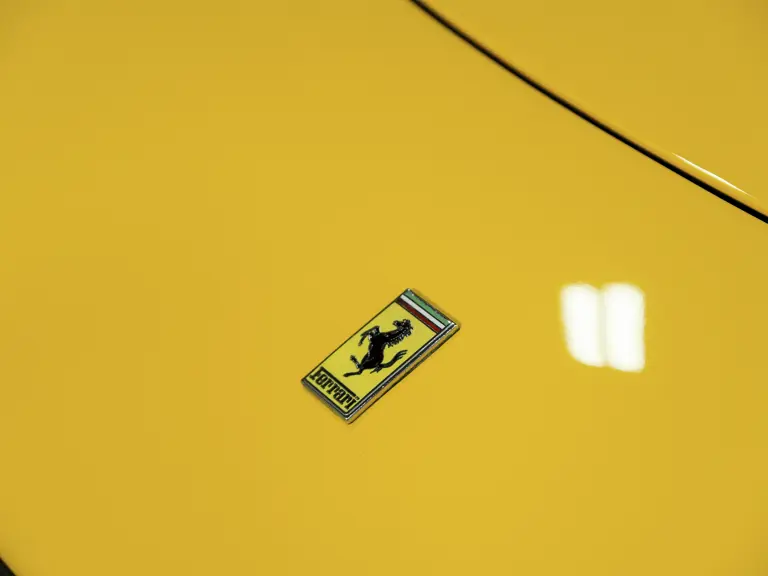
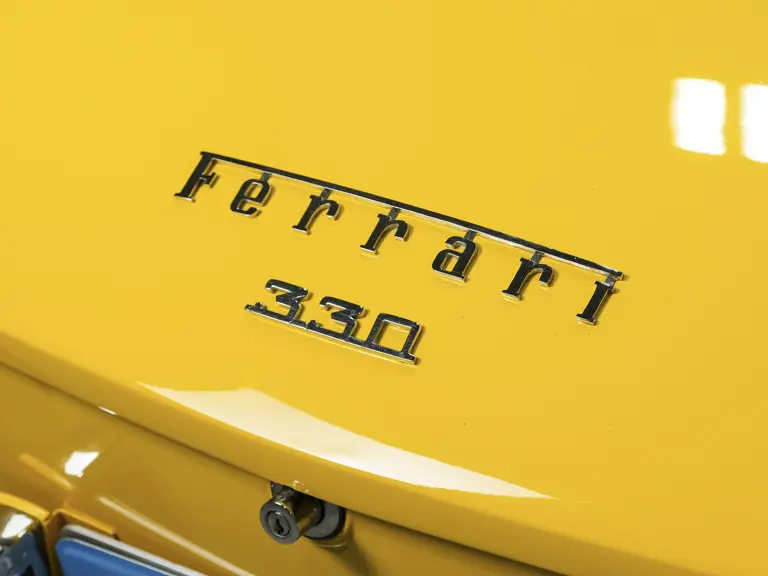

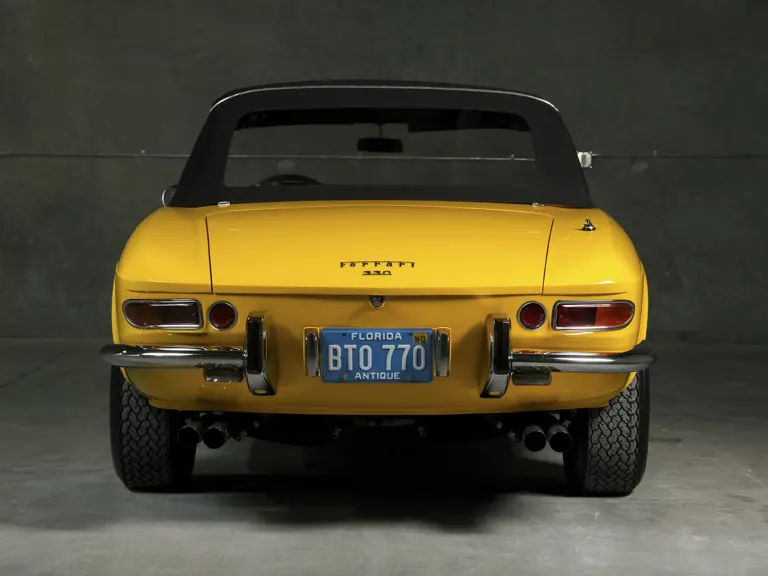


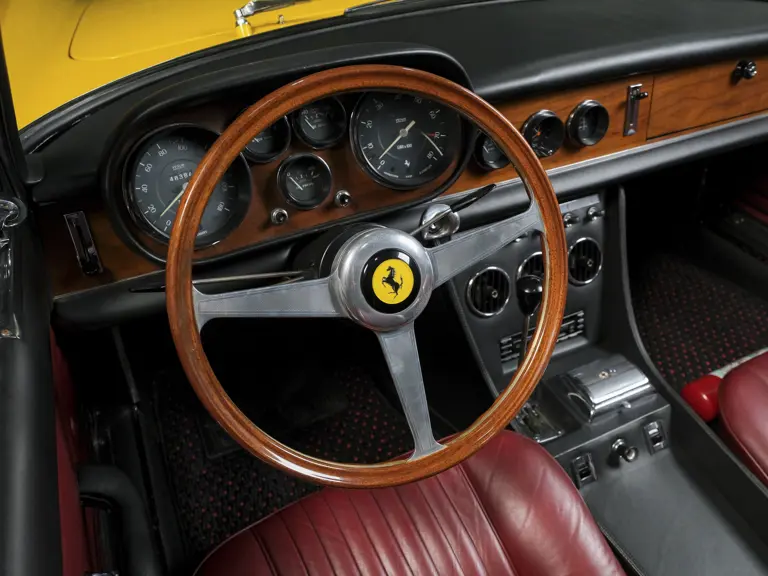
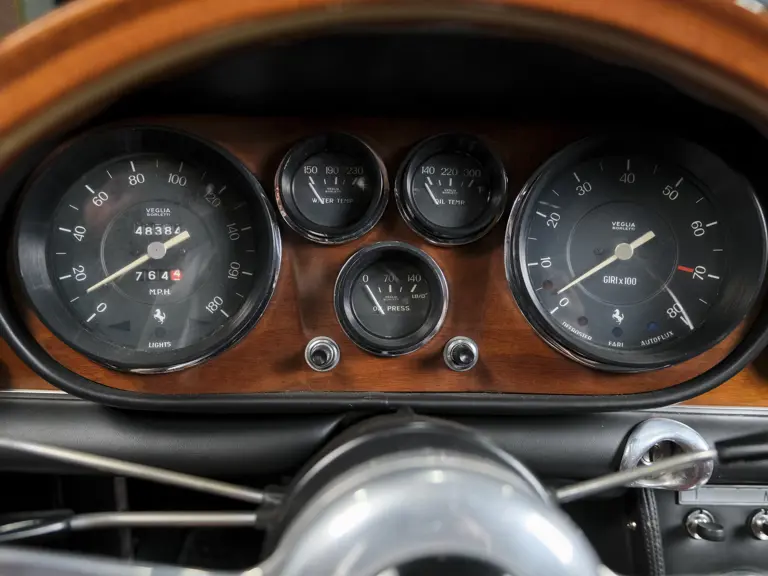
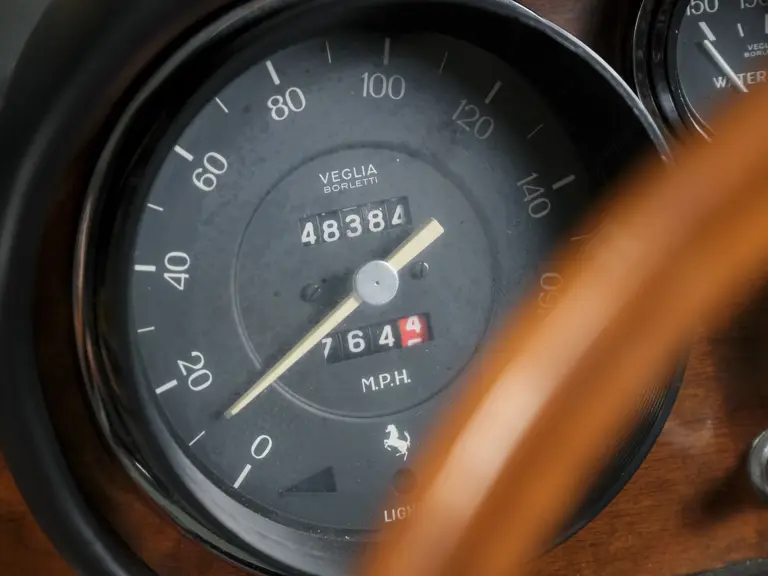
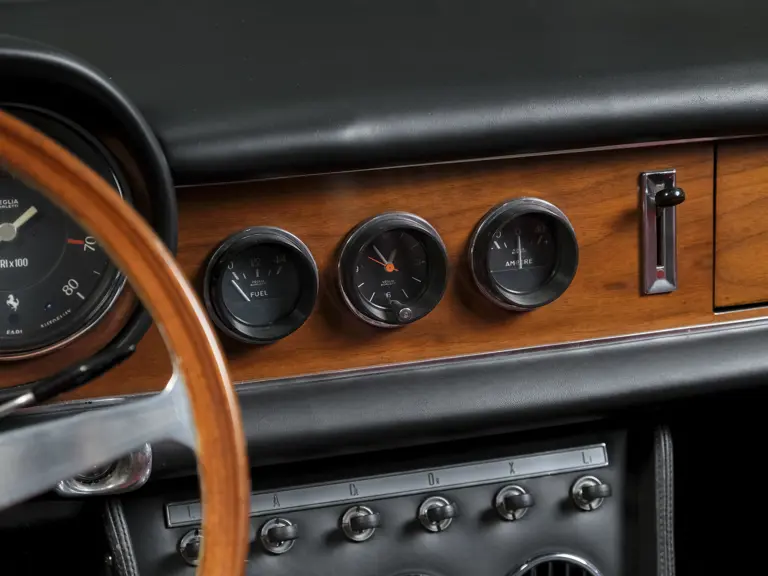
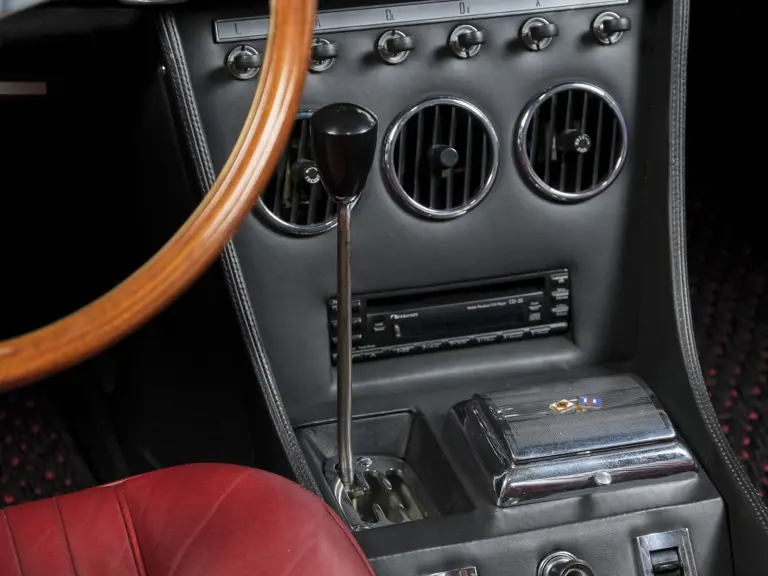
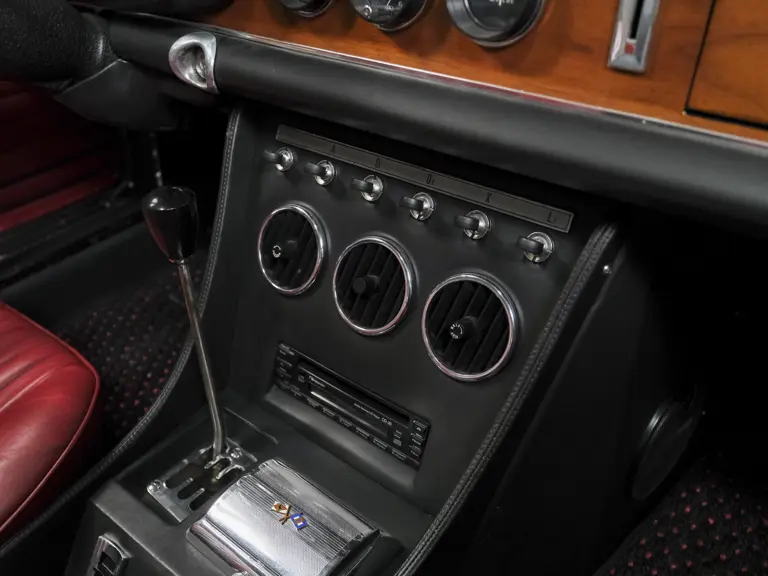
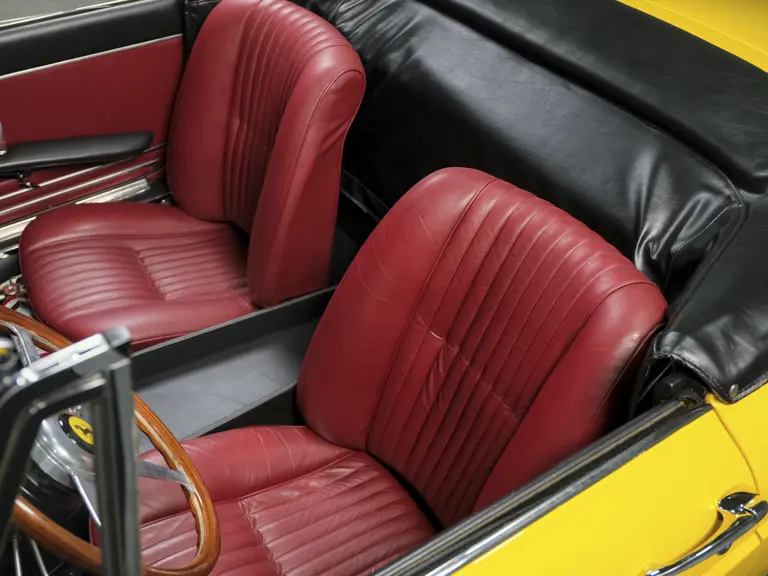
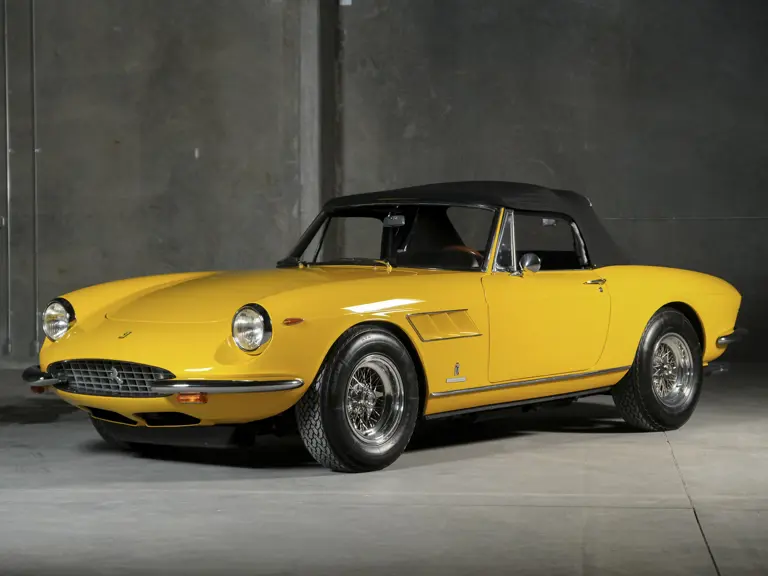


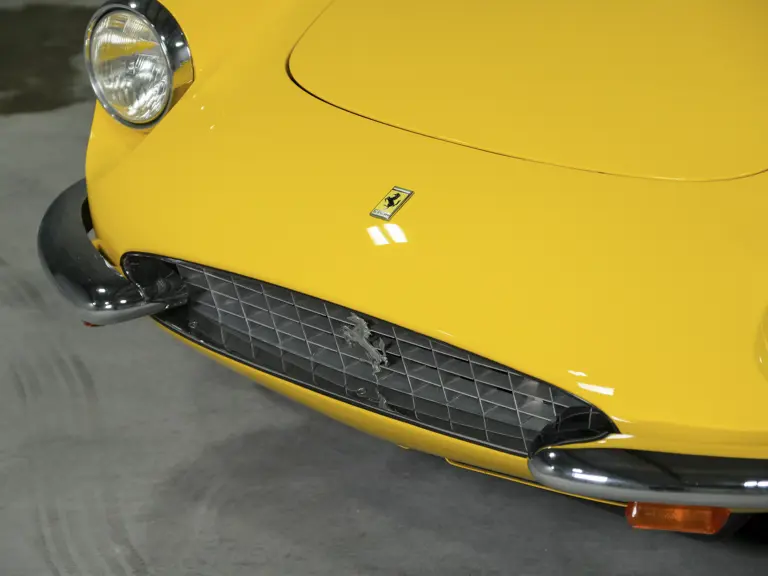
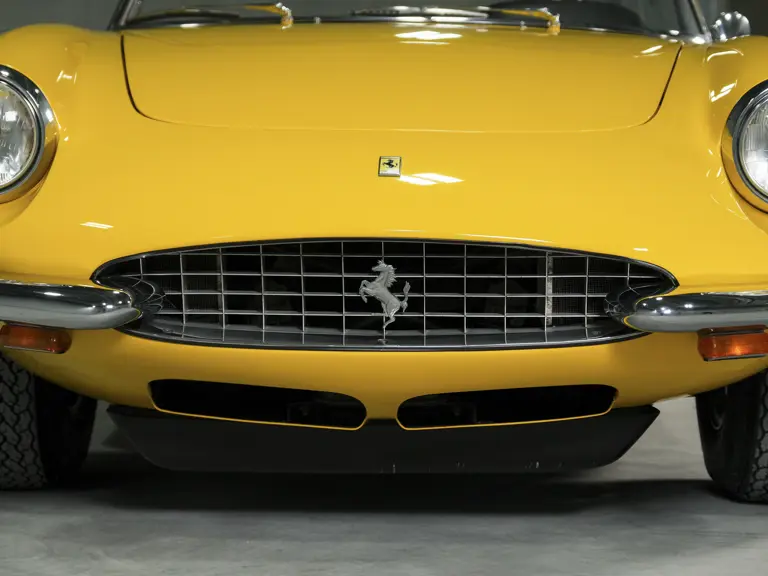
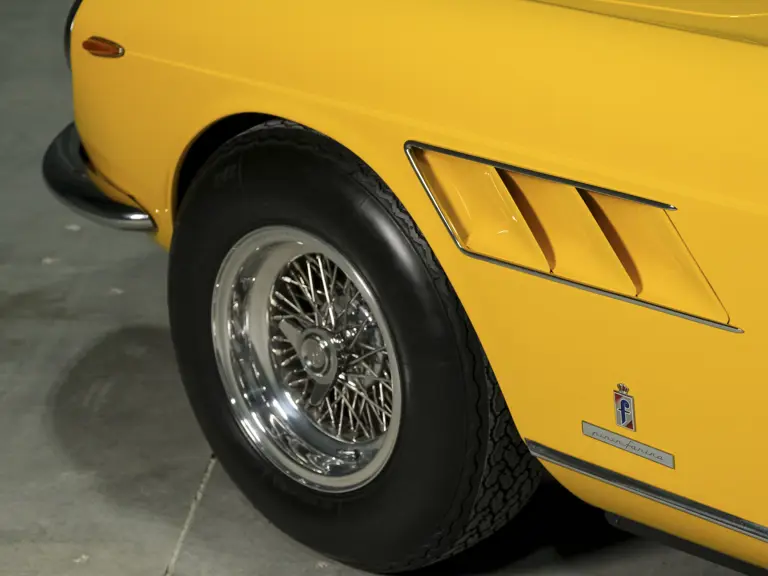
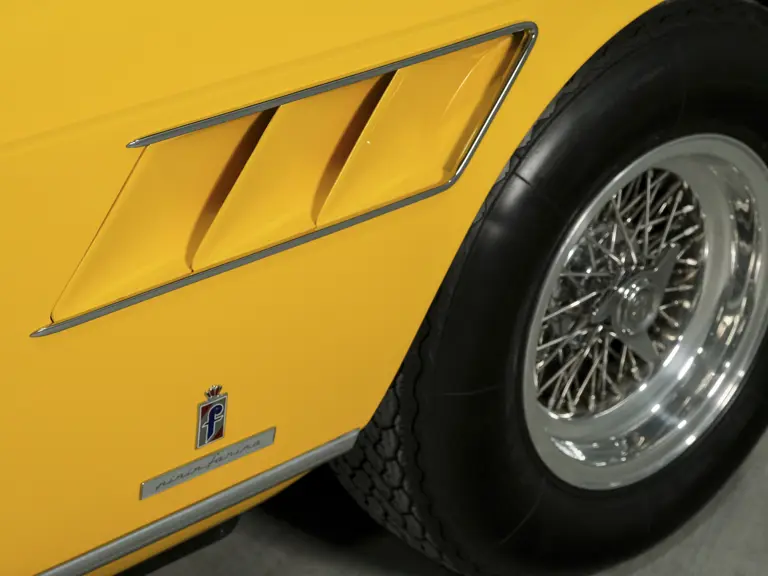

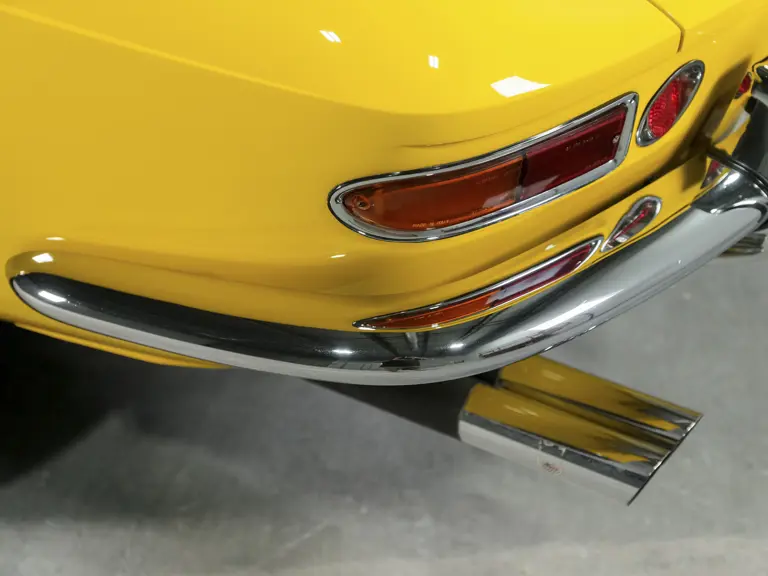
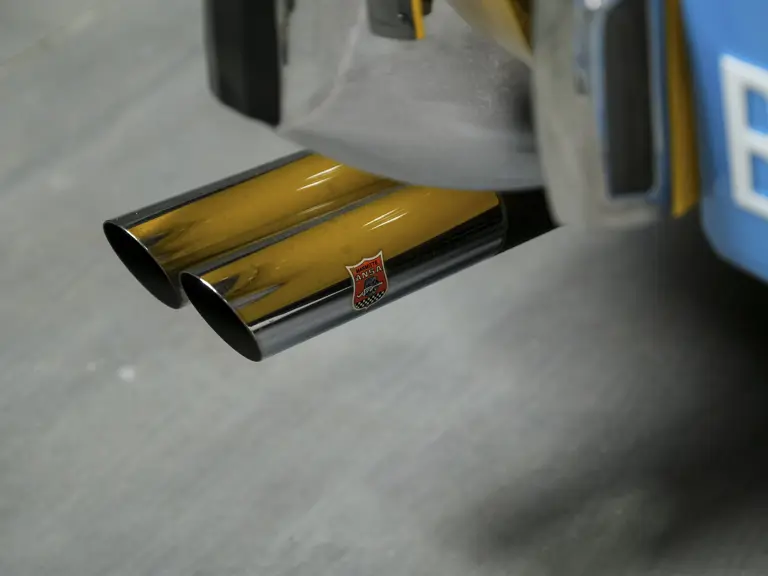
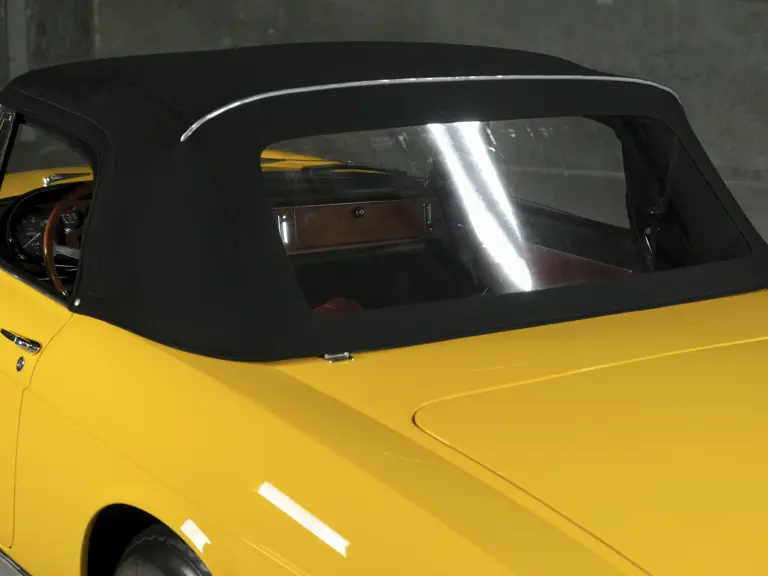
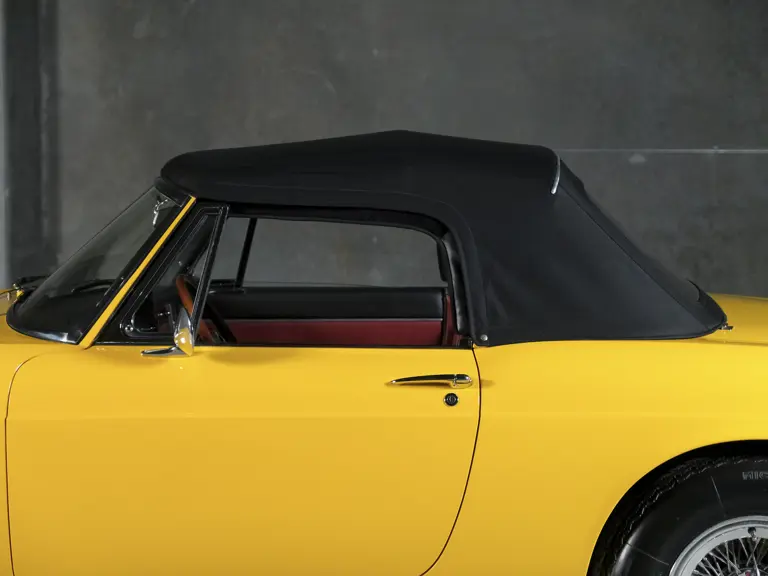
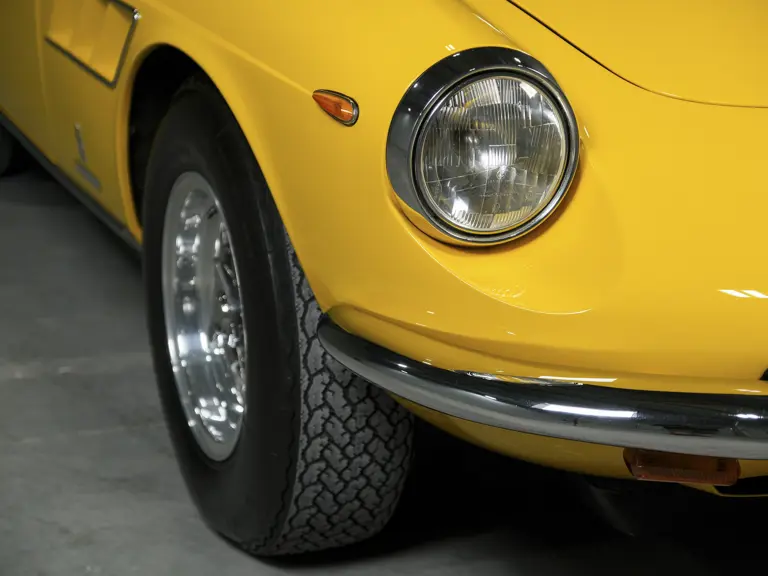
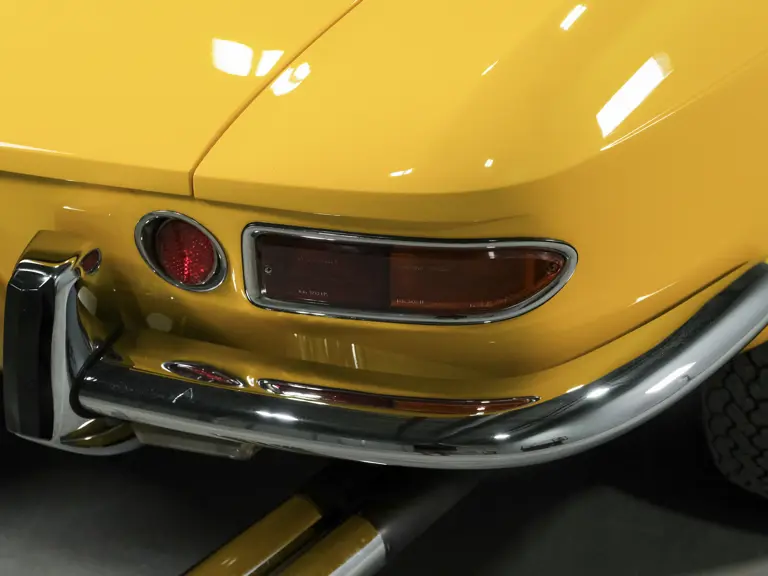
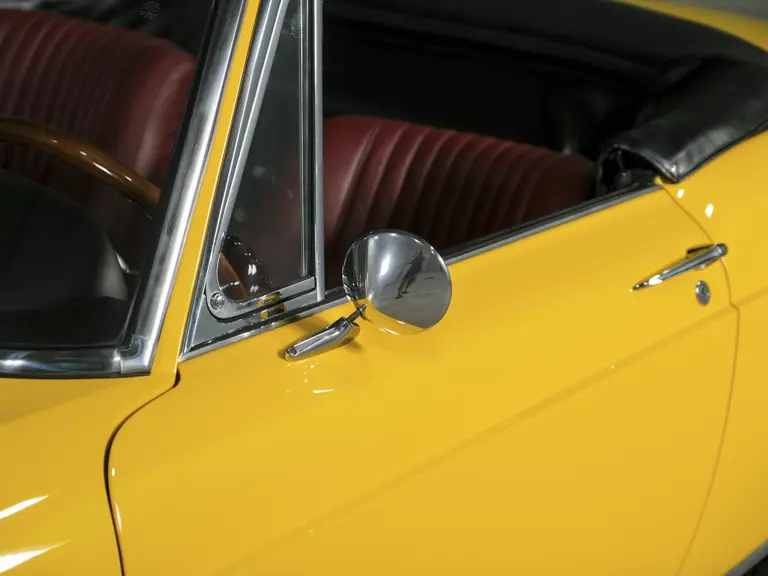

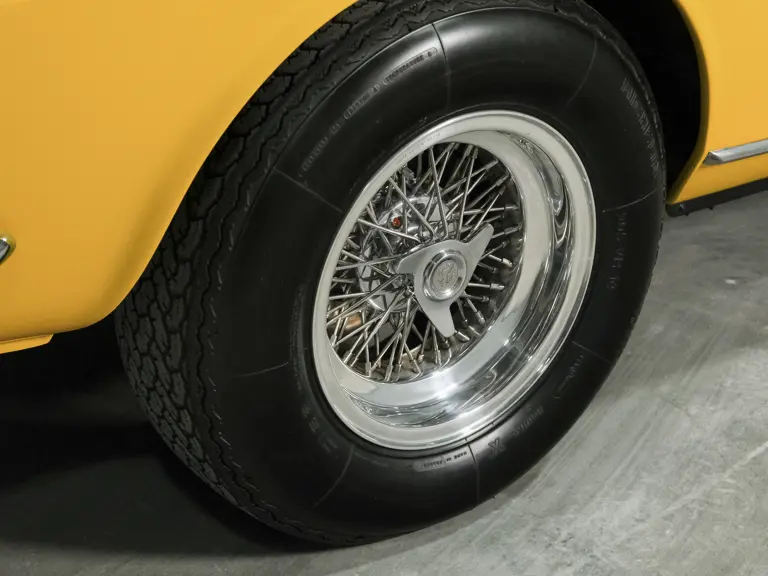

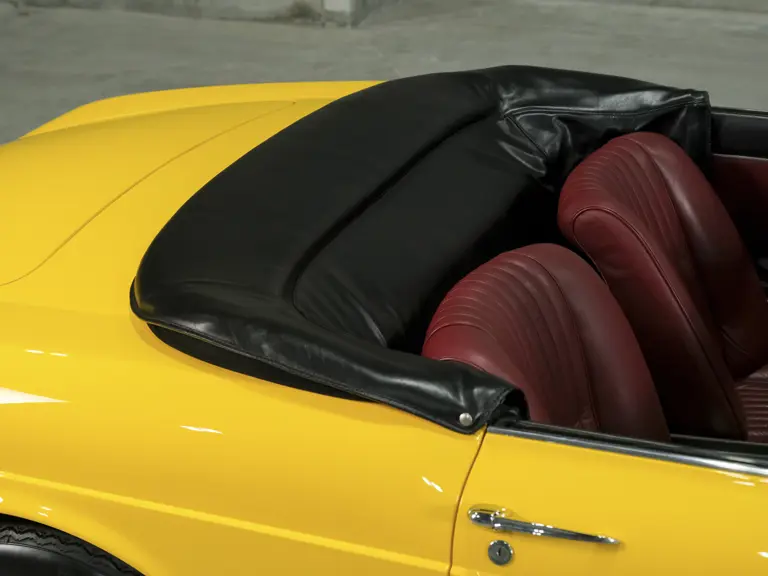
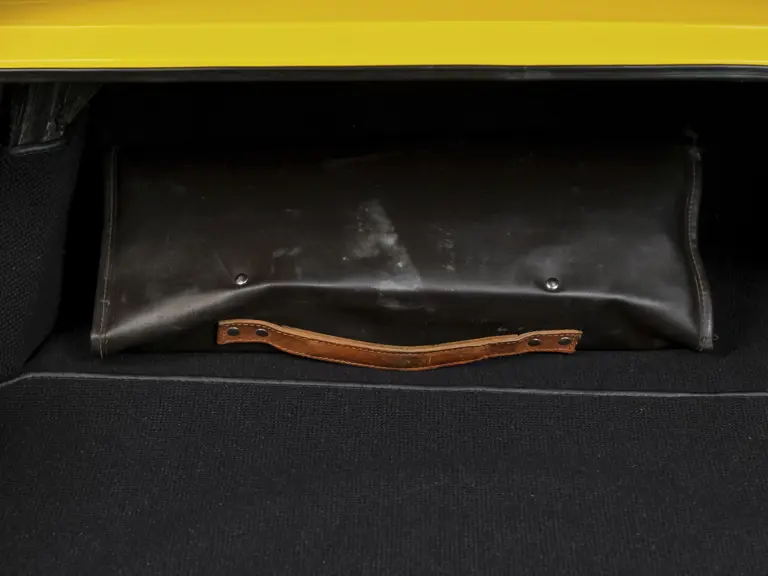
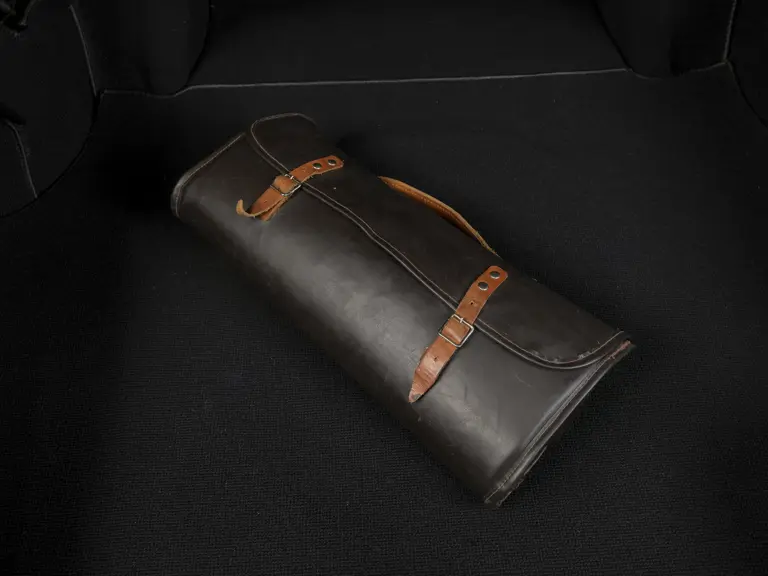
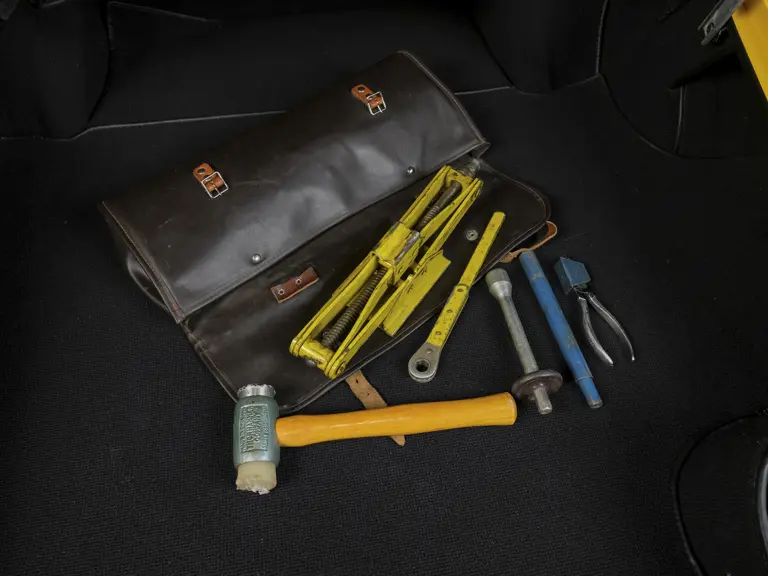
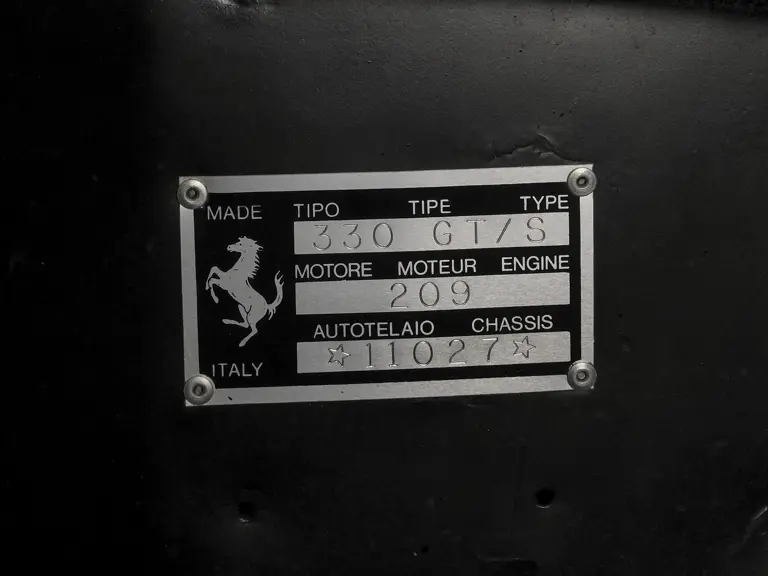
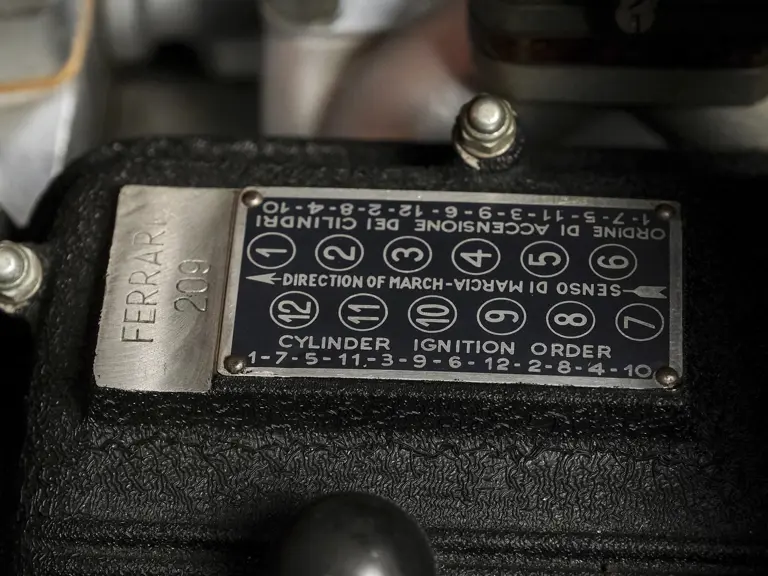
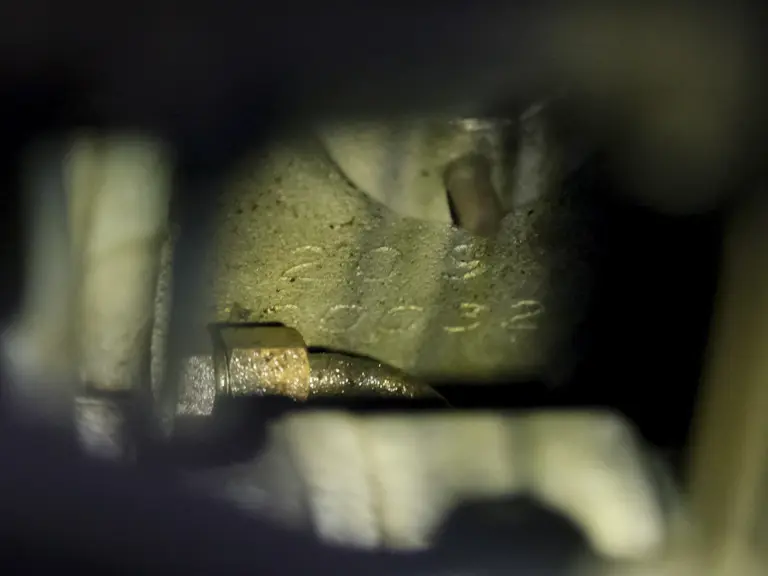
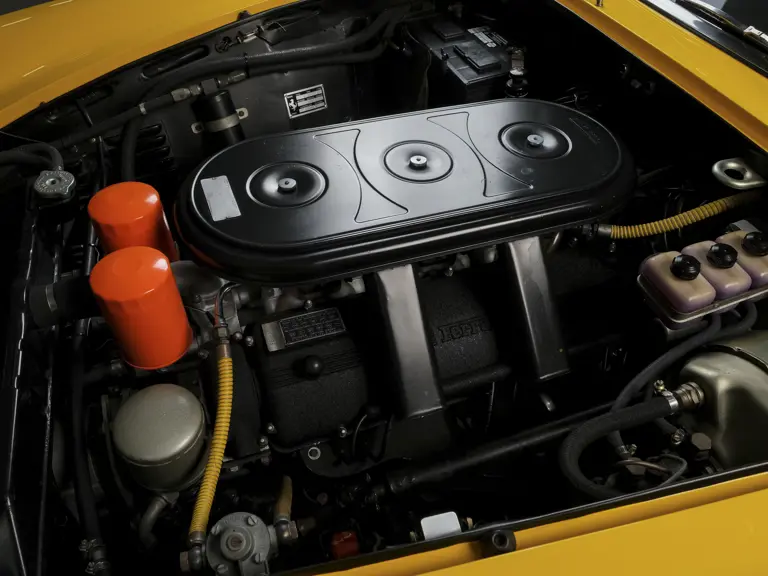
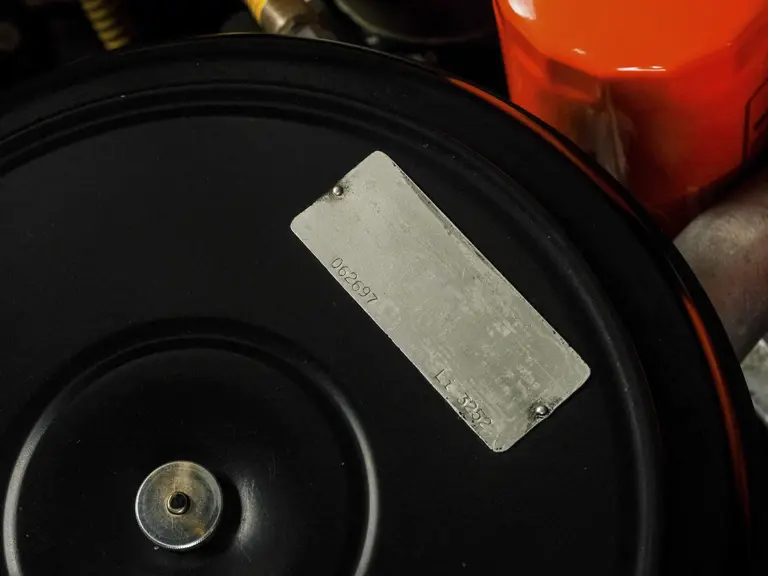


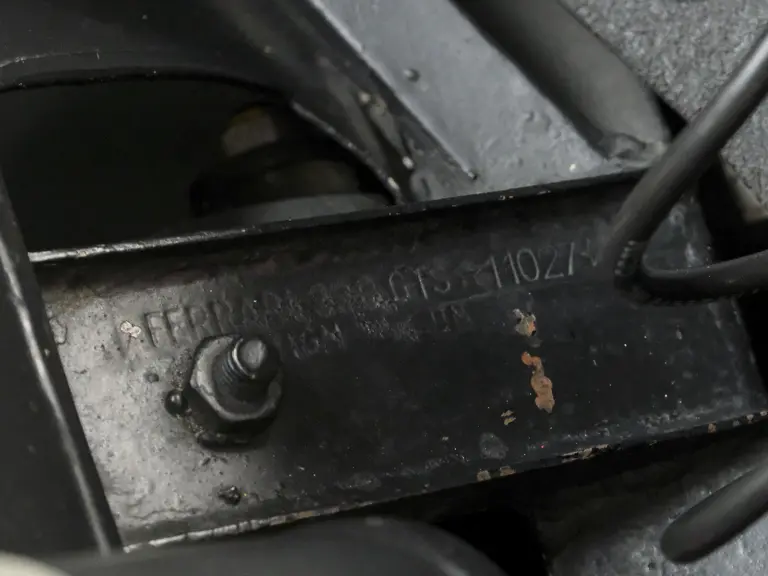
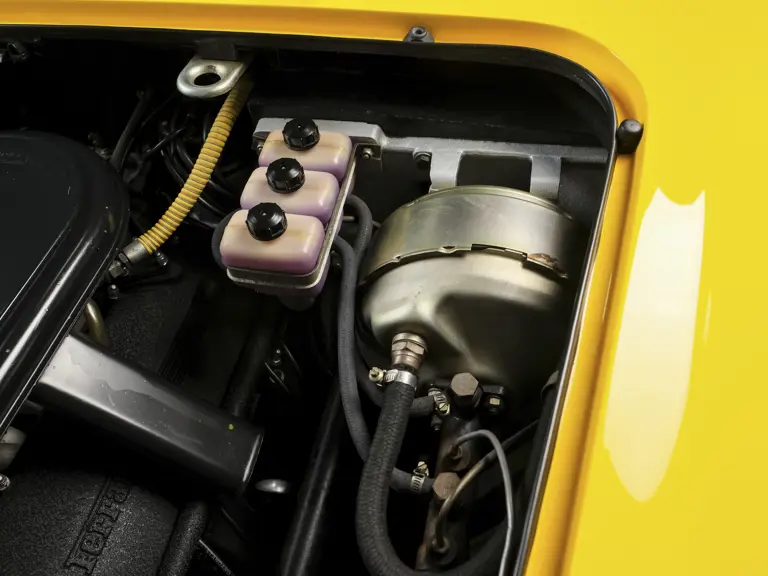

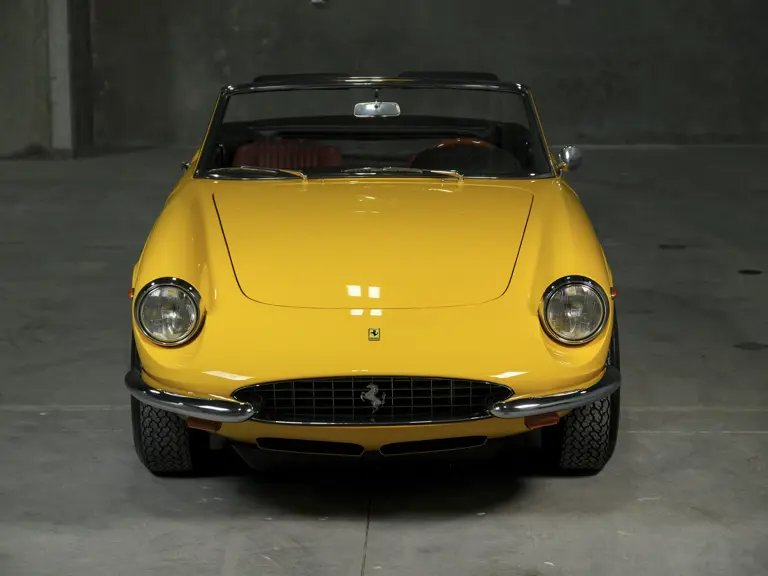

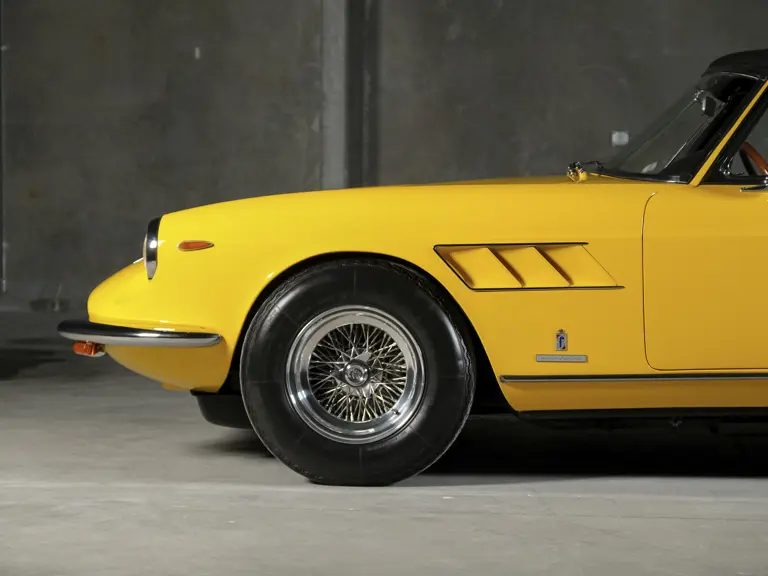

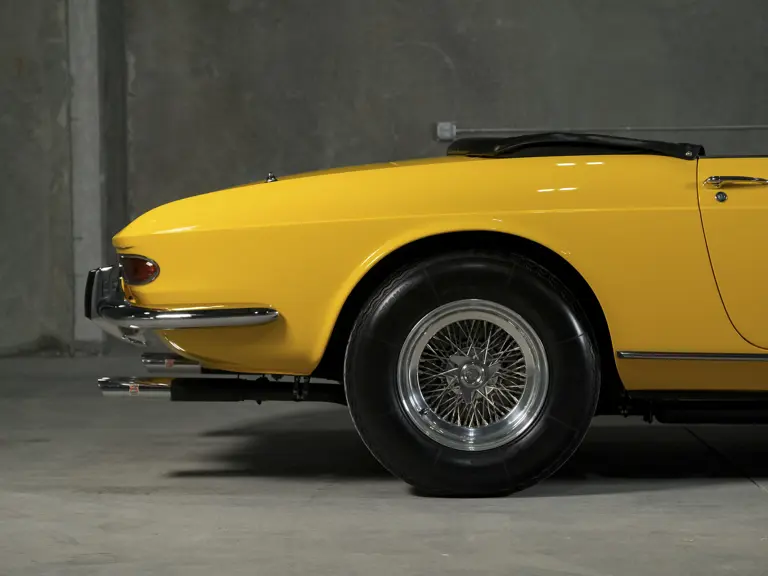
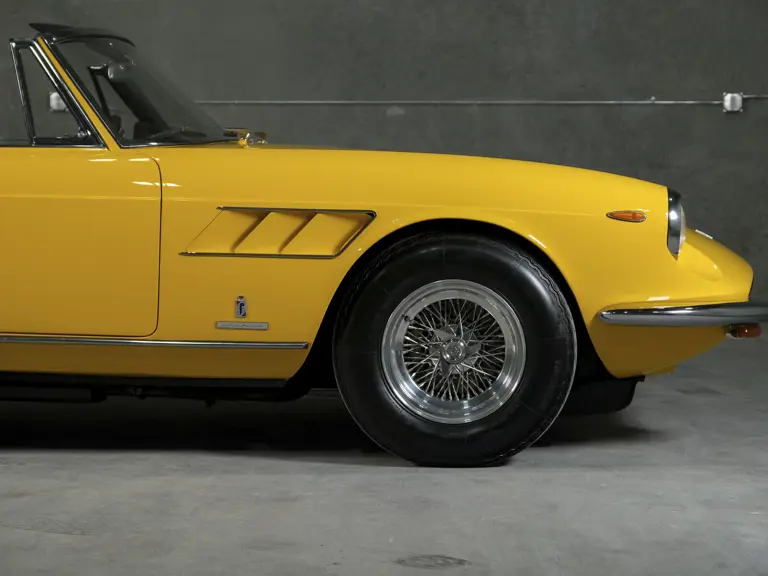
 | Monterey, California
| Monterey, California
